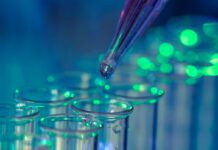
Scientists at UNSW Sydney have advanced efforts against PFAS contamination with a breakthrough catalyst system capable of breaking down these persistent chemicals.
Per- and poly-fluoroalkyl substances (PFAS), notoriously resistant to degradation due to their stable chemical structure, contaminate water sources globally, posing environmental and health risks, the university said in a news release.
“Owing to its robust nature, simple application, and cost effectiveness, the new system we have developed shows successful PFAS remediation in the lab, which we hope to eventually test at a larger scale,” explained Dr Jun Sun, lead researcher at UNSW’s School of Chemistry.
The university reported that PFAS are widely used in products like food packaging, non-stick cookware, and firefighting foams, entering water supplies and soil with long-lasting effects.
Current remediation methods, such as carbon absorption and oxidation, are energy-intensive and often ineffective at fully breaking down PFAS.
“In the time that PFAS was being produced globally, it wasn’t realised that this chemical is essentially non-destructible,” noted Professor Naresh Kumar.
The study, funded by a $3 million grant from the Australian Research Council, showcases the catalyst’s ability to degrade branched PFAS like PFOS and PFOA.
In lab tests, the catalyst achieved over 75 per cent defluorination within five hours, outperforming previous B12-based catalysts.
“The next step for us is to really try this on a pilot scale to see if this can be done out of the laboratory on a real sample,” added Prof Kumar.
The findings, published in Water Research, underscore the potential of this innovative approach to mitigate the pervasive impact of PFAS on environmental and human health.
As regulatory bodies worldwide tighten PFAS standards, advancements in remediation technology like this catalyst system are critical for safeguarding water quality and public health.


















